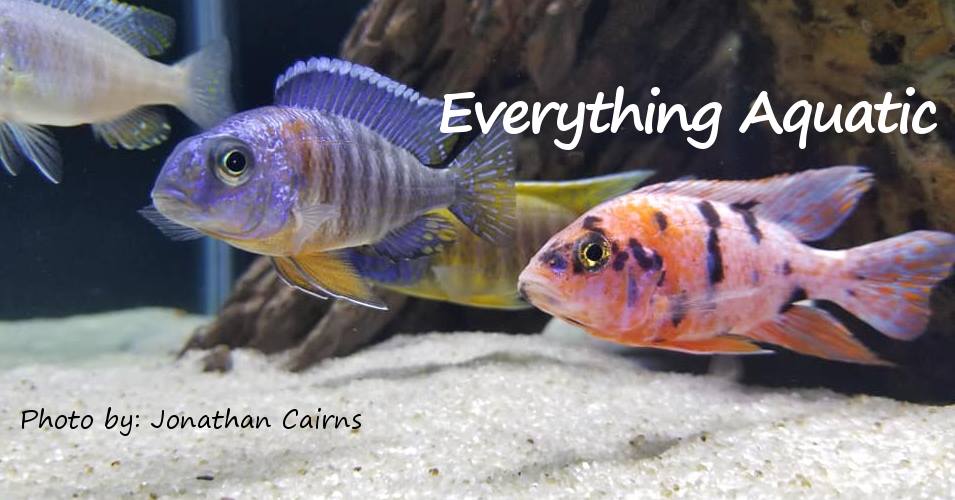Acclimation Guide
By Dena Edwards on Thursday, May 28, 2015 at 7:17 PM
You’ve always heard that buying fish direct from a breeder will fill your tanks with higher quality fish. But what about all those horror stories about DOA or fish arriving with their gills burned from ammonia buildup and attempting to gulp oxygen? Many times I’ve heard that it is a waste of time shipping fish because they always die; and to purchase local. I have a real problem with that statement. How do you think your local fish store gets its fish?
The key to having fish or invertebrates survive is knowing water parameters. More specifically the difference between the water in your tank and the water in the shipping bag. The greater the difference in water parameters the more caution must be taken to acclimate fish. When purchasing from a local store odds are the water you bring the fish home in will be fairly similar to your tanks and acclimation is not necessarily required. But what about when fish are shipped across the country or internationally? There are a few key steps that I take to ensure stress-free acclimation and to avoid fish losses where possible.
A. Ask the seller for their parameters
….and, test the bag water when it arrives! I have learned over the years that many are either ignorant of the conditions in their tanks or for some reason don’t want to provide accurate information. I am not willing to risk lives and my money over someone’s belief. For example, I have had breeders tell me their pH runs 7.0; yet the water they shipped was over 8.0 in pH.
B. How much variance in pH? Are you having to raise or lower pH?
The closer the pH between the two water sources the easier it will be to acclimate new arrivals. The general rule is if there is no more than 0.4 variance then you can simply net out the fish and drop them into your tank. This is the ideal situation. However, it never happens for me.
Is the pH in your tank higher than the shipping water? Then take a short time to acclimate. Fast acclimation is used simply to ensure there is nothing in my water that the fish reacts to. Fish have an easier time adjusting to a higher pH so long as it is less than 1.0 variance in pH acclimation isn’t too involved.
Is the pH lower in your tank? Then acclimation is critical to avoid osmotic shock as well as avoiding a struggle to breathe and low survival. You know that messing around with pH can lead to fish deaths (the reason why we never recommend messing with the pH in a tank), but it is sometimes required when fish ship, as is my case. When lowering the pH fish must undergo changes in their gills to be able to take in oxygen. Drop the pH too quickly and this change will kill them faster than just about anything.
C. When the variance is greater than 1.0
….take it slow! Plop and drop will just about guarantee fish losses, especially when lowering pH. If during the acclimation process you see the fish pumping their gills or gulping air then slow down before the fish succumbs.
Here are the steps I take when dealing with fish shipments:
1. Test pH of bag water (most often this is between 7.0 and 8.0)
2. Test pH of QT tank water (my water runs 6.6 out of the tap)
3. Test bag water for ammonia (when pH is above 7.0 ammonia is more toxic to fish). This is important as it can lead to other intervention steps when necessary to save struggling fish.
4. Add 1 drop Seachem Prime to help neutralize ammonia buildup
5. Set up a drip acclimation into a 5 gallon bucket
6. Carefully transfer fish and bag water into the bucket
7. When variance is between 0.4 and 0.8 I run a fast drip of 5 drops per second; but when greater than 1.0 then slow drip of 1 drop per 1-2 seconds
8. Place a screen or net over the bucket to avoid jumpers
9. Every 15 minutes or so, monitor fish behavior for any signs of stress. If stress is found, stop the drip and let them adjust; and only continue when they are again breathing normal and no longer gulping air
10. Once bucket is 3/4 full, I carefully pour off most of the water and continue with the drip
11. When bucket is again 1/2 full then net out the fish and transfer to the tank
12. I leave the water low in the tank for the first day. Then, fill up the next day or even do a small water change if there is any measurable ammonia
Because my water pH runs low I have had to make some drastic decisions to save the fish. Most shipments take 4-8 hours to acclimate to my lower pH level. Dropping pH for 7.8 to 6.6 is not an easy or quick process. Once when fish arrived in pH over 8.0 with 1.5 PPM ammonia I knew I couldn’t take so many hours to acclimate. Fish arrived very stressed and already experiencing issues maintaining buoyancy in the water. As I knew I didn’t have enough time to lower the pH I opted to add baking soda to my QT tank to match that of the bag and transferred the fish. Then, do small daily water changes to lower pH. In these cases it can take 7-10 days to remove baking soda and to get the QT back down to my norm of 6.6 pH.
Hopefully, some of the above will help you the next time you receive fish.


Thank you Dena I learned a lot in this article!
You are most welcome Susan. Glad you found it helpful.